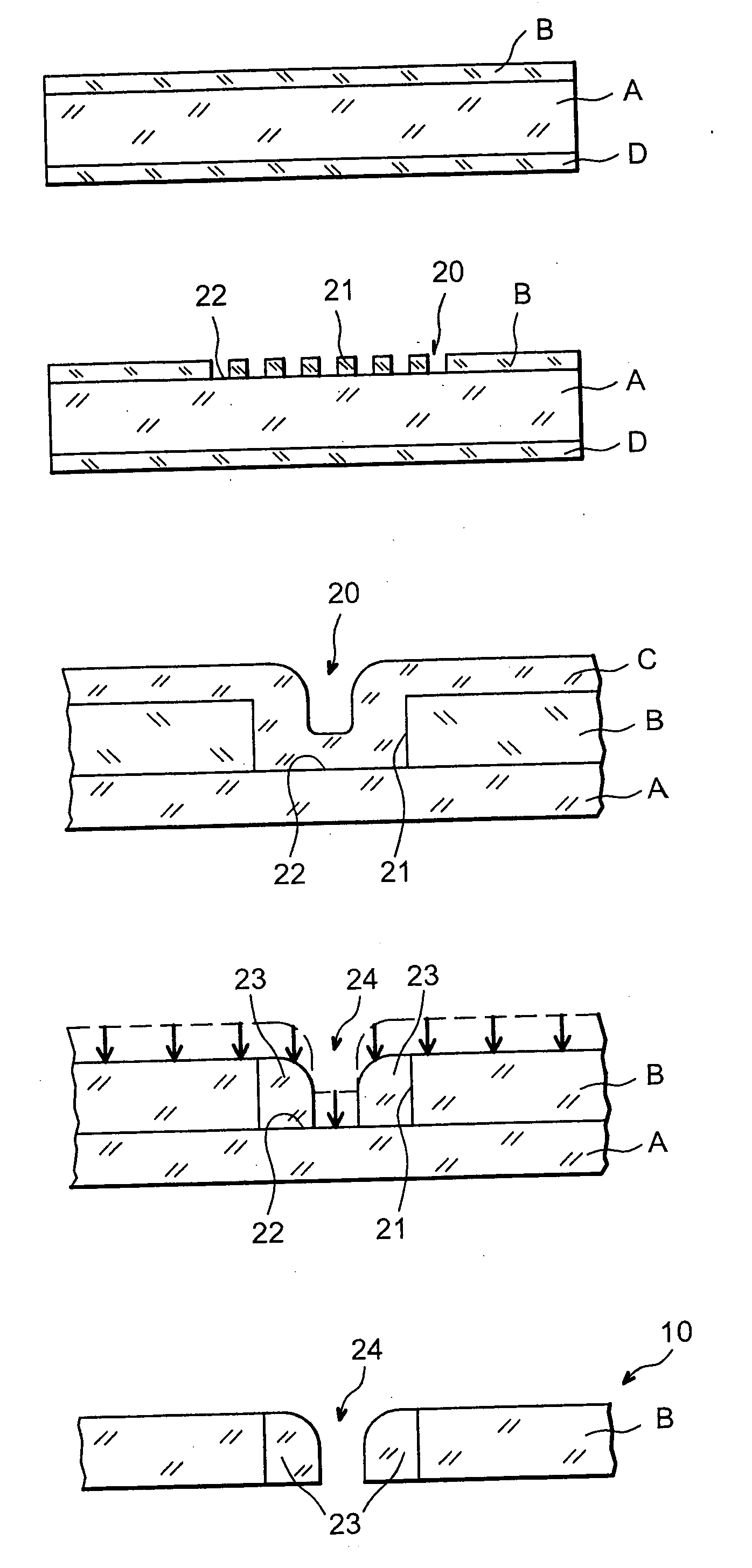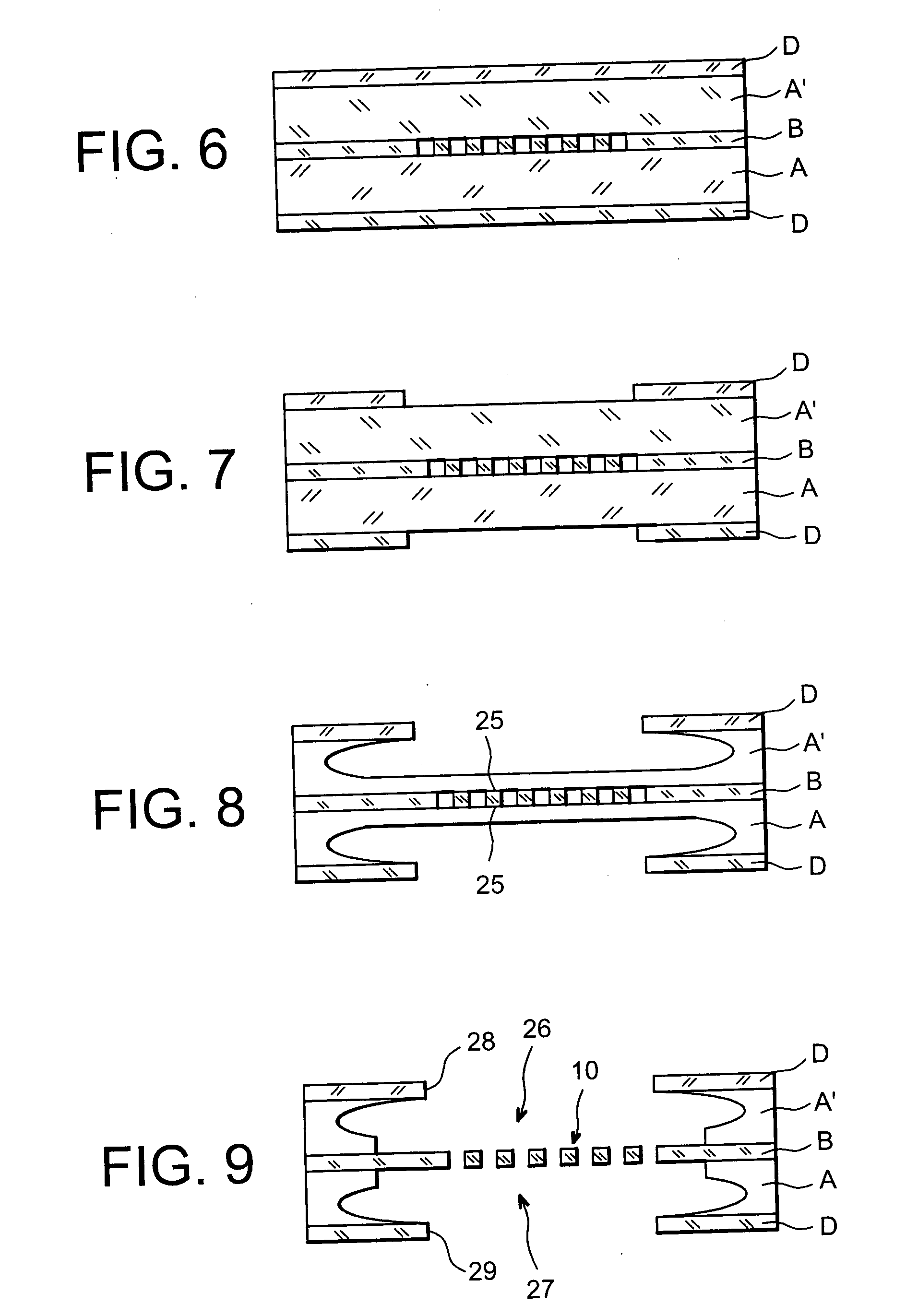Method for producing a biomimetic membrane, biomimetic membrane and its applications
a biomimetic membrane and biomimetic membrane technology, applied in the direction of fluid speed measurement, optical light guide, photomechanical treatment, etc., can solve the problems of unstable lipid bi-layers, difficult to handle, formation of pores,
- Summary
- Abstract
- Description
- Claims
- Application Information
AI Technical Summary
Benefits of technology
Problems solved by technology
Method used
Image
Examples
first embodiment
[0121] FIGS. 1 to 5 schematically illustrate, in cross-sectional form, the respective steps a) to e) of the method according to the invention, in said method.
second embodiment
[0122] FIGS. 6 to 9 schematically illustrate, in cross-sectional form, step e) of the method according to the invention in said method.
[0123] FIG. 10 corresponds to two photographs taken with an optical microscope, at two different enlargements (1000.times. and 200.times.), of a membrane as obtained at the end of step e) of the method according to the invention.
[0124] We will refer firstly to FIGS. 1 to 4 which schematically represent the respective steps a) to e) of the method according to the invention, in a first embodiment of said method.
[0125] As can be seen in FIG. 1, the first step of the method, or step a), comprises depositing, on the two principal faces of a plate A formed for example of silicon, two layers, respectively, B and D, formed for example of thermal silicon oxide.
[0126] The second step of the method, or step b), which is illustrated in FIG. 2, consists in forming within layer B, by a lithography followed by a dry etching of said layer, for example by fluorinated...
third embodiment
[0139] FIG. 10 shows two photographs taken with an optical microscope of a membrane as obtained at the end of step e) of the method according to the invention in said method in which layer B has been partially liberated from plate A by dry isotropic etching of said plate by means of a plasma (in a "downstream" or "after-glow" type reactor and in a fluorinated chemistry in the presence of oxygen), said isotropic etching having been carried out through the pores formed in said layer B.
[0140] Part A of FIG. 10 corresponds to a 1000.times.enlargement, whereas part B of said Figure corresponds to a 200.times.enlargement.
[0141] Said membrane has a surface area of around 10 mm.sup.2, a thickness of 100 nm and pores of 350 nm diameter separated from each other by 700 nm.
[0142] Said membrane has been formed by using a plate A in silicon and layers B and C in silicon oxide.
[0143] Part A of FIG. 10 makes it possible to distinguish the matrix of pores of the membrane, whereas part B of said fig...
PUM
 Login to View More
Login to View More Abstract
Description
Claims
Application Information
 Login to View More
Login to View More - R&D
- Intellectual Property
- Life Sciences
- Materials
- Tech Scout
- Unparalleled Data Quality
- Higher Quality Content
- 60% Fewer Hallucinations
Browse by: Latest US Patents, China's latest patents, Technical Efficacy Thesaurus, Application Domain, Technology Topic, Popular Technical Reports.
© 2025 PatSnap. All rights reserved.Legal|Privacy policy|Modern Slavery Act Transparency Statement|Sitemap|About US| Contact US: help@patsnap.com



